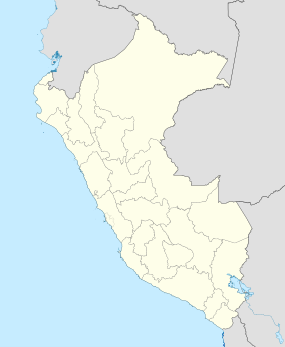Chiribaya culture
| Location | southern Peru, northern Chile |
|---|---|
| Coordinates | 18°S 71°W / 18°S 71°WCoordinates: 18°S 71°W / 18°S 71°W |
| Type | culture |
| History | |
| Cultures | Chiribaya culture |
| Site notes | |
| Condition | In ruins |
The Chiribaya culture flourished near the coast of southern Peru and adjacent Chile from 700 CE until Spanish settlement in the late 16th century. The classic phase of the Chiribaya culture was from 1000 CE until 1360 CE. The Chiribaya culture consisted of both maritime settlements along 220 kilometres (140 mi) of the Pacific Ocean coast and agricultural settlements inland in valleys of the Osmore and Tambo rivers in Peru and the Lluta river and Azapa Valley in Chile.
The lower Osmore valley, one of the centers of the Chiribaya culture, has been extensively studied by archaeologists because it appears to have been colonized by both the Wari and Tihuanco empires and the later Lupaca people and the Inca Empire. These highland empires relied on the lower-altitude valleys to supply them with agricultural products such as maize and chile peppers.
The people of the Chiribaya culture lived near the Pacific Ocean in the Atacama Desert which is commonly known as the driest non-polar place in the world., The total annual precipitation at Ilo, Peru, at the mouth of the Osmore River is .1 inches (2.5 mm). Agriculture is only possible where water from the rivers and a few springs is available for irrigation. The four rivers and their tributaries rise about 130 kilometres (81 mi) inland in the wetter Andes at elevations of up to 5,000 metres (16,000 ft). The cold Humboldt Current offshore creates one of the world's richest marine ecosystems and supports large numbers of fish, marine mammals, and birds.
Chiribaya inland sites are usually located along rivers, which provide water for agricultural production, although the amount of suitable land was limited both by the steepness of the terrain and, near the ocean, by limited quantities of water for irrigation.Camelid pastoralism was also an important means of subsistence and for production of textiles.
...
Wikipedia

